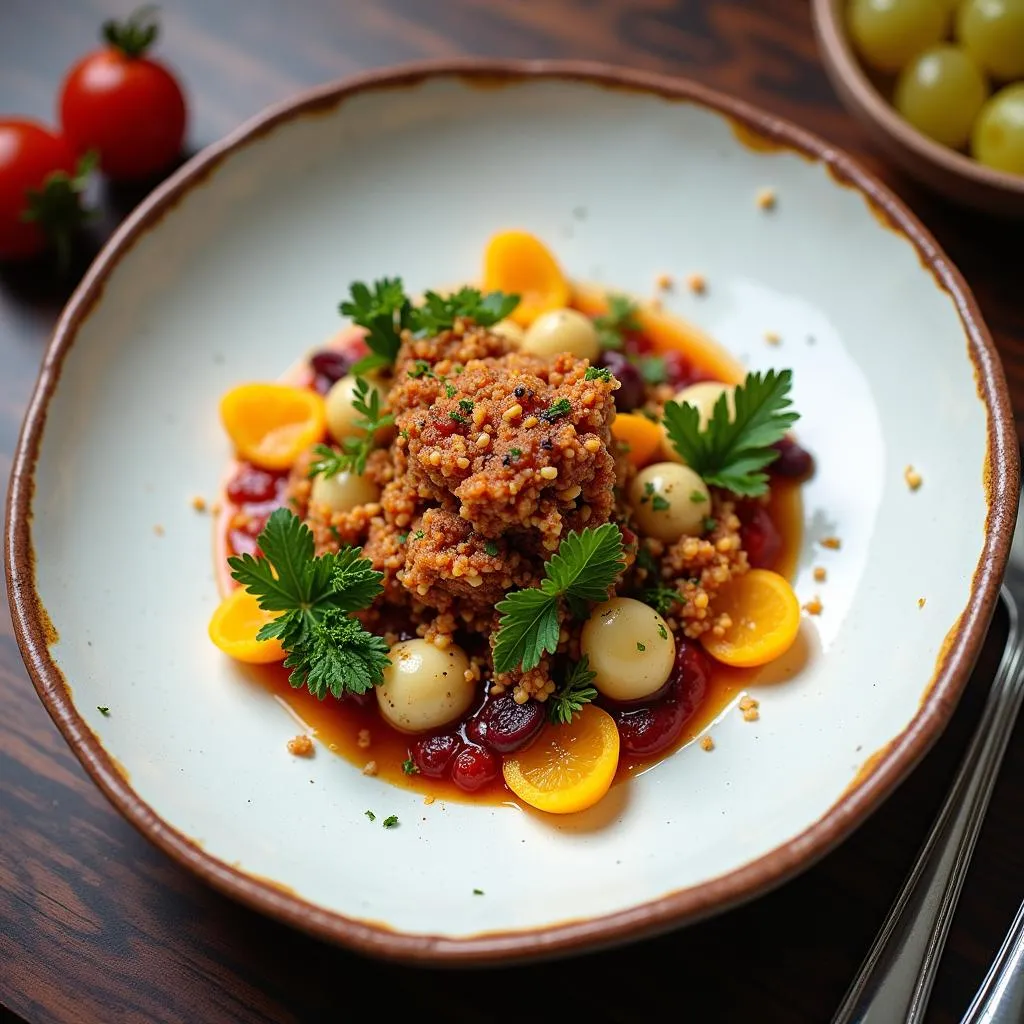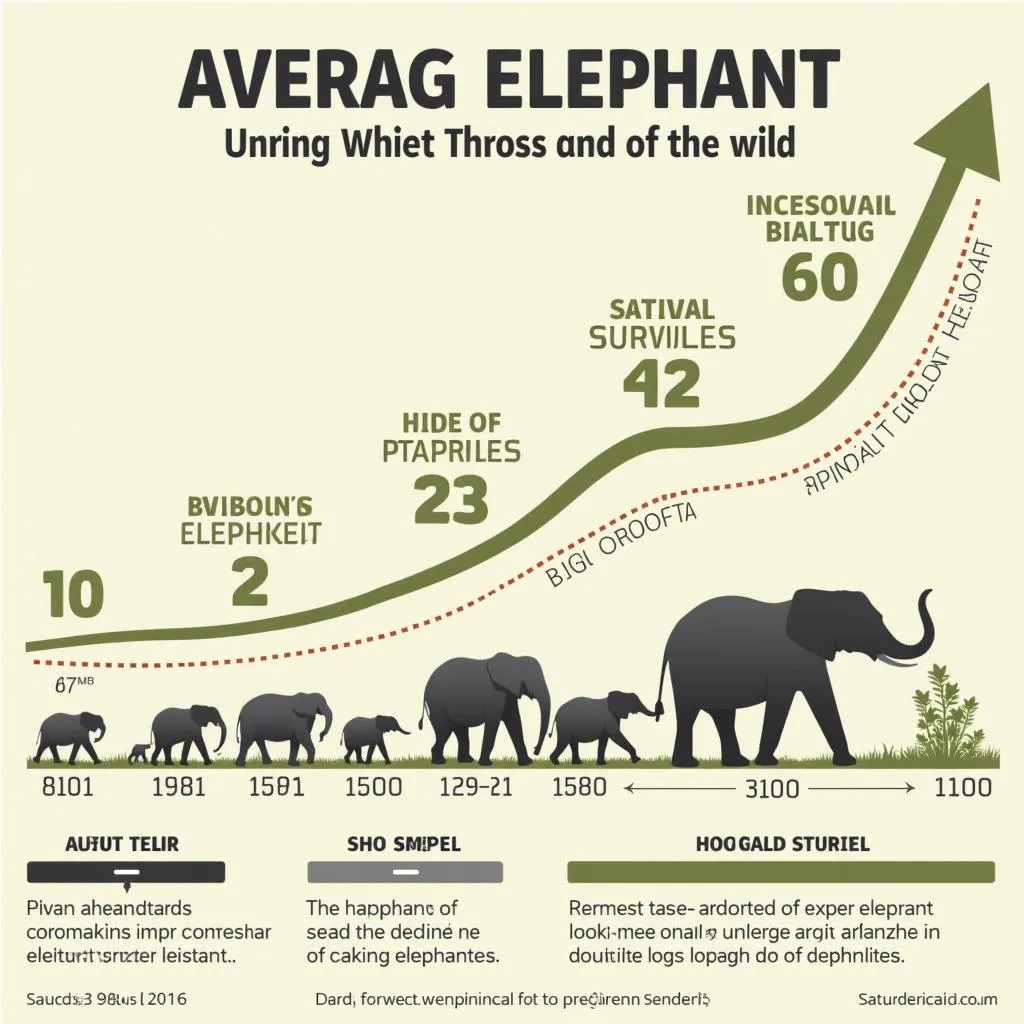A Flavorful Journey: Exploring African Cuisine History
African cuisine, a vibrant tapestry of flavors and culinary traditions, is as diverse as the continent itself. From the fragrant tagines of Morocco to the spicy stews of West Africa, African Cuisine History is a captivating tale of resourcefulness, adaptation, and the evolution of unique culinary identities. For centuries, African cooks have transformed simple ingredients into exquisite dishes, reflecting the diverse landscapes, climates, and cultural influences that have shaped the continent.
The Ancient Roots of African Cuisine
 Ancient African Cuisine: Gathering and Preparing Food
Ancient African Cuisine: Gathering and Preparing Food
The history of African cuisine dates back to the dawn of humanity. Archaeological evidence suggests that early humans in Africa were skilled hunter-gatherers, relying on the land’s bounty for sustenance. The continent’s fertile soil and diverse ecosystems provided a wide variety of ingredients, including wild grains, fruits, vegetables, and game. Over time, these early inhabitants developed sophisticated methods of food preservation, such as drying, smoking, and fermentation, allowing them to store food for extended periods.
The Influence of Trade and Migration
As trade routes crisscrossed the continent, African cuisine began to incorporate new flavors and ingredients. The trans-Saharan trade route, which connected North Africa to the Middle East and Europe, introduced spices like cinnamon, cloves, and saffron, as well as new cooking techniques. The arrival of Arab traders in East Africa brought rice, coffee, and citrus fruits, while the Portuguese introduced chilies, tomatoes, and maize from the Americas. These culinary exchanges enriched African cuisine, creating a unique blend of indigenous and foreign influences.
 A Bustling African Spice Market
A Bustling African Spice Market
One notable example of the influence of trade on African cuisine is the development of “soul food” in the United States. This culinary tradition, deeply rooted in the experiences of enslaved Africans, evolved from the limited resources available to them on plantations. African slaves brought with them their culinary knowledge and techniques, adapting traditional recipes to use new ingredients like okra, black-eyed peas, and collard greens. Soul food, a testament to the resilience and creativity of African people, has become an integral part of American cuisine.
Regional Variations and Culinary Traditions
African cuisine is not a monolithic entity but rather a collection of diverse regional cuisines, each with its own distinctive flavors and cooking methods.
West Africa: A Fusion of Spices and Flavors
West African cuisine is known for its bold flavors, often combining chilies, ginger, and peanuts to create rich and aromatic dishes. Staples include rice, millet, yams, and cassava, often served with stews, soups, and grilled meats. Popular dishes include jollof rice, a flavorful rice dish cooked in a tomato-based sauce, and fufu, a starchy side dish made from pounded yams or cassava.
East Africa: A Coastal Influence
East African cuisine is heavily influenced by its coastal location, with seafood playing a prominent role in many dishes. Coconut milk, lime juice, and spices like cumin and coriander are commonly used to flavor curries, stews, and grilled fish. Popular dishes include ugali, a stiff porridge made from maize flour, and nyama choma, grilled meat, often served with kachumbari, a fresh tomato and onion salad.
North Africa: A Blend of Mediterranean and Arabic Flavors
North African cuisine is a melting pot of Mediterranean and Arabic influences, characterized by the use of spices like cumin, turmeric, and saffron. Tagines, slow-cooked stews named after the earthenware pots they are cooked in, are a staple dish, often featuring lamb, chicken, or vegetables. Couscous, a small pasta, is another popular accompaniment to tagines and other North African dishes.
Southern Africa: A Diverse Culinary Landscape
Southern African cuisine is a blend of indigenous African traditions and European influences, reflecting the region’s complex history. Maize, a crop introduced by Portuguese traders, is a staple ingredient, used to make porridge, bread, and beer. Braai, a barbecue tradition, is popular throughout the region, with grilled meats and sausages often served with pap, a stiff porridge made from maize meal.
Modern Influences and the Future of African Cuisine
Today, African cuisine is experiencing a renaissance, with chefs and food enthusiasts around the world rediscovering its rich history and diverse flavors. Modern African cuisine is characterized by a focus on fresh, local ingredients and a willingness to experiment with traditional recipes. Chefs are also incorporating modern cooking techniques and presentation styles, elevating African cuisine to new heights.
Is Brazil an African country, you might ask? While not geographically located in Africa, Brazil has strong cultural ties to the continent due to the transatlantic slave trade. This influence is evident in Brazilian cuisine, which features dishes like feijoada, a black bean stew with origins in Portugal and West Africa.
 Modern African Cuisine: Fusion of Tradition and Innovation
Modern African Cuisine: Fusion of Tradition and Innovation
As African cuisine continues to evolve, it is poised to become a major force in the global culinary landscape. The continent’s rich culinary heritage, combined with the creativity and innovation of modern African chefs, promises to introduce the world to a new era of flavorful and exciting dishes.
Conclusion
The history of African cuisine is a testament to the resilience, creativity, and adaptability of African people. From ancient grains to modern fusion dishes, African cuisine has evolved over centuries, reflecting the diverse landscapes, cultures, and influences that have shaped the continent. As the world’s appetite for new and exciting flavors grows, African cuisine is poised to take center stage, captivating palates and showcasing the vibrant culinary heritage of this remarkable continent.
FAQ
What are some common ingredients in African cuisine?
African cuisine utilizes a wide array of ingredients, including grains like rice, millet, and sorghum; starchy roots like yams, cassava, and plantains; legumes like black-eyed peas and lentils; a variety of fruits and vegetables; and meats like beef, chicken, goat, and fish. Spices and herbs are also prominent, adding depth and complexity to dishes.
What are some popular African dishes?
Some popular African dishes include jollof rice, fufu, tagine, nyama choma, and bobotie. These dishes represent the diversity of culinary traditions across the continent, each with its own unique flavors and ingredients.
Where can I try authentic African cuisine?
You can find authentic African cuisine at a variety of restaurants, from small, family-run establishments to upscale dining venues. Look for restaurants that specialize in a particular region of Africa or offer a diverse menu representing different culinary traditions.
What are some resources for learning more about African cuisine?
There are numerous resources available for learning more about African cuisine, including cookbooks, websites, blogs, and food documentaries. You can also find cooking classes and workshops that focus on African cuisine.
Need Assistance?
For further insights into the fascinating world of African Life and cuisine, don’t hesitate to contact us. We have a dedicated team available 24/7 to answer your queries and provide personalized recommendations. Reach us at:
Phone Number: +255768904061
Email: [email protected]
Address: Mbarali DC Mawindi, Kangaga, Tanzania
We look forward to hearing from you and sharing the wonders of Africa!


